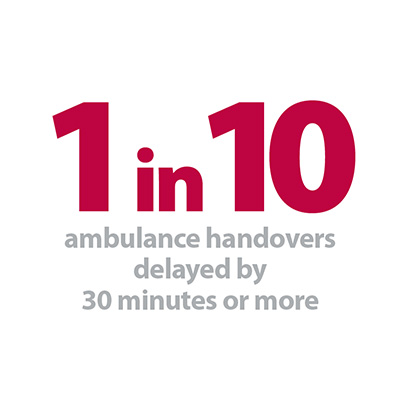


While snow has fallen, advent calendars are open and Christmas tunes have already reached saturation point, today marks the first publication of the weekly winter sitrep data by NHS England and therefore the official start of winter. In the first of our weekly NHS winter watch updates we reflect on two things: how have NHS trusts and foundation trusts been preparing for winter? And how is the provider sector performing compared to the same time last year?
NHS trusts and foundation trusts place a particular focus on winter planning, to take into account the higher incidence of flu, norovirus and respiratory conditions which put additional pressure on the sector. You can hear trusts talking about their winter preparations in our new Provider Bites video interviews; and we highlight some of the approaches taken by local trusts and the national level support being offered in our new winter briefing published today.
We have also looked at some of the performance data to see whether the starting point for winter is better or worse than last year. Looking at the latest available data we can see there are highs, lows and some in-between, for example:
The highs
- Performance against the 4-hour A&E standard has improved from 89.1% in October 2016 to 90.1% in October 2017 and 12 hour trolley waits are down 79%; this is despite a 3% increase in A&E attendances and a 4% increase in emergency admissions.
- At the same time as reducing the number of open beds by 2%, trusts have reduced overall overnight bed occupancy to 87.1% in Q2 2017/18, compared with 87.6% in the same quarter last year.
- In August 2017 there were over 113,000 new referrals to psychological therapies, a 7% increase on the same month last year. However in August 2017, 88.5% of those who finished treatment had waited less than 6 weeks, an improvement on the 87.0% achieved in August 2016.
For our mental health patients and service users it is about making sure their care plans and treatment are fit for purpose to see them through the winter.
Chief Executive, East London NHS Foundation Trust
The in-betweens
- The national focus on reducing delayed transfers of care (DTOC) has seen a reduction in the total number of delayed days of 14% in October 2017 compared to the same month last year. However, the DTOC rate for Q2 2017/18 was 5.2%, well above the government target of 3.5%. We explore this further in our DTOC data blog.
- The number of urgent operations cancelled in October 2017 was 48% less than in the same month last year (287 vs. 363). However, there is a note of caution as the number of urgent operations cancelled for the second time or more has increased (11 vs. 6).
The lows
- Compared to October 2016 the number of mixed sex accommodation breaches (women being placed in a male ward or vice versa) has increased 48%, reaching a six-year high.
- The number of patients waiting over 18 weeks for elective treatment continues to increase and the size of the waiting list is increasing too – with 80,000 more patients on the waiting list in September 2017 than in September 2016.
For many of these measures, we won’t know how these figures change over winter until they are published next spring; so we will have to wait to find out if the number of 12-hour trolley waits peaks like last winter, or if the improvement in DTOC is sustained. But the story so far of ‘a bit better than last year but not great’ is echoed in the first weekly sitrep publication. For the figures that can be compared to last year we see they are around the same level, but with a concern that general and acute bed occupancy is already sitting at 94.5%. While the sitrep data looks at hospital services we must remember that the whole system - mental health, community and primary care - contributes to managing demand and treatment during the winter period.
Our chief executive, Chris Hopson said: “Most indicators that can be compared suggest we are in a similar – or slightly better - position than at the same stage last year.
“Given that demand is growing, this may suggest that the unprecedented amount of preparation ahead of winter by NHS trusts and at the national level is already proving helpful.
“Our report on those winter preparations published today describes the steps that have been taken to ensure patient safety and high quality care through the challenging months ahead.”
In Wye Valley we’ve been looking at staffing out of hours and at night time particularly to ensure that we’ve got the right staffing to meet demand.
Chief Executive of South Warwickshire NHS Foundation Trust and Wye Valley NHS Trust